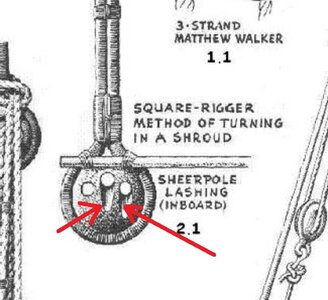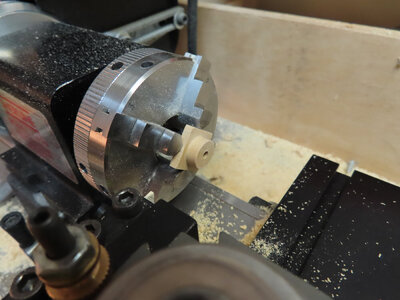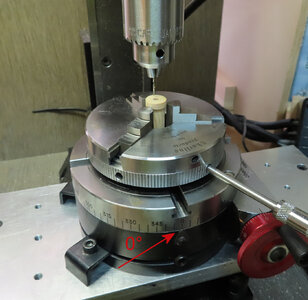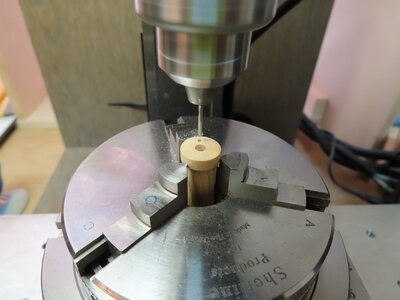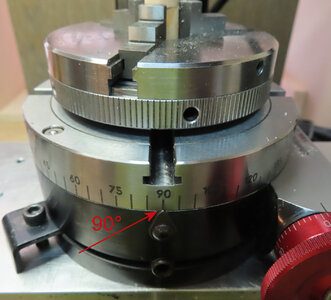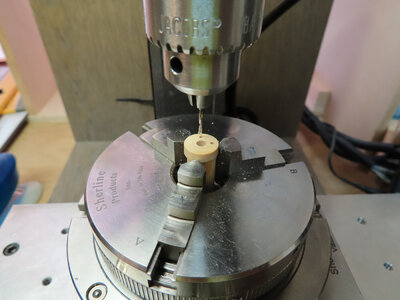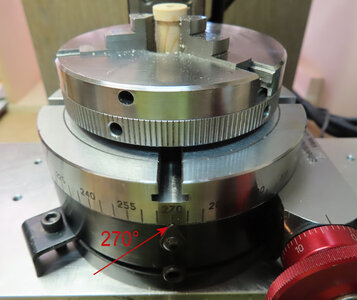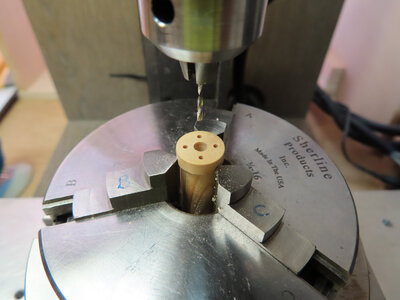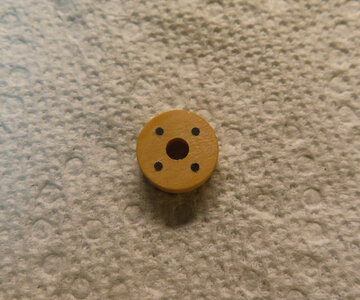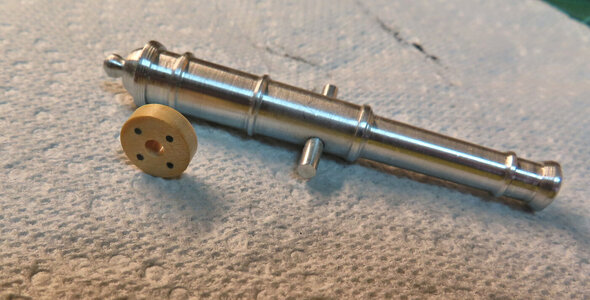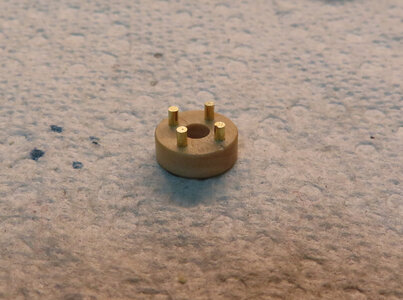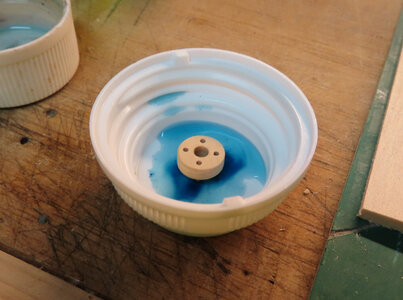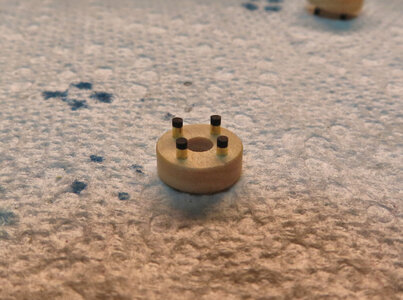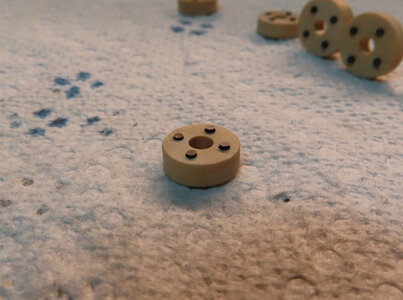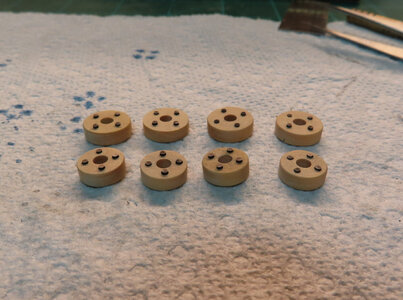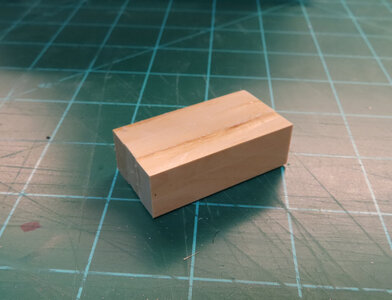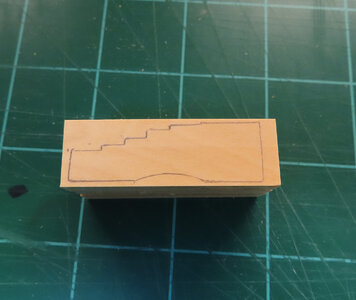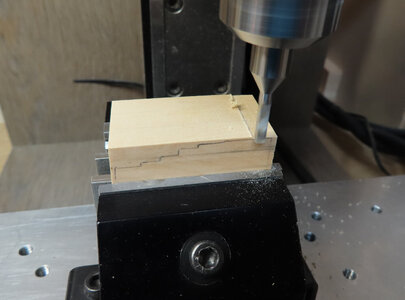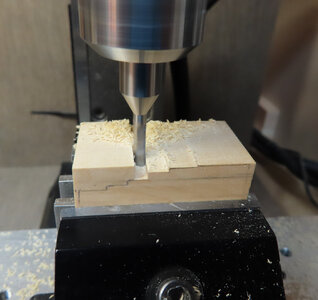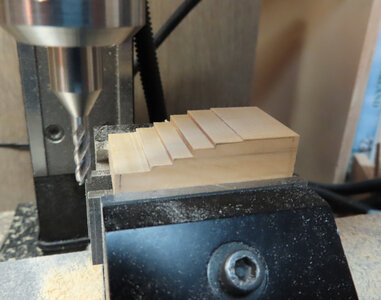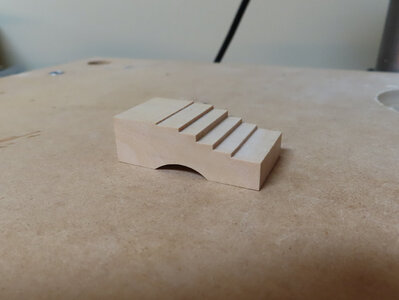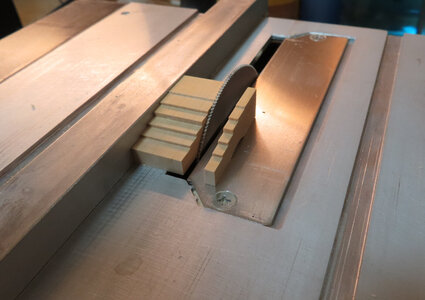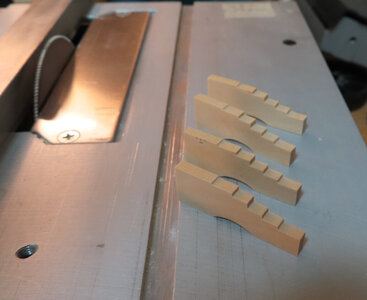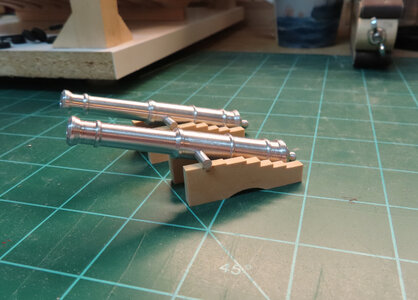Thank you Uwe for sharing. Always you bring interesting things.
Well . . . the latest. I departed from the dead eyes and wanted to experiment quickly on the carriages. First stop was the wheels.
I know this is OVERKILL using a Rotating Table, but I had it and usually do not get to use it, so, I brought it out as I really wanted to take my time (since I am off today) and try to make a wheel prototype. I am using boxwood piece as you will see it is NOT a dowel. I am running out of wood to choose from and I have to use my imagination. Good thing about a lathe, it will take almost anything square or likewise and turn it into a round object. The Bolts on the wheels are brass blackened with 1.2mm brass rod and a drill bit to drill same.
The Rotary Table has degrees marked off and there is no guessing here.
NOTE: Yes, I know the Rotary Table (Images) are shot NOT complete sequence and order as far as the 0, 90, 270, and 360, but I just demonstrated the "principle" - I know there are gaps in the process. Sometimes, in a sequence like this, it is very easy to forget what step you are at when you are trying to take pictures, document, and then pay attention to where you are. Mostly me forgetting to take a picture when I should have.  View attachment 185721
View attachment 185722
View attachment 185723
View attachment 185724
View attachment 185725
View attachment 185726
View attachment 185727
View attachment 185728
View attachment 185721
View attachment 185722
View attachment 185723
View attachment 185724
View attachment 185725
View attachment 185726
View attachment 185727
View attachment 185728



